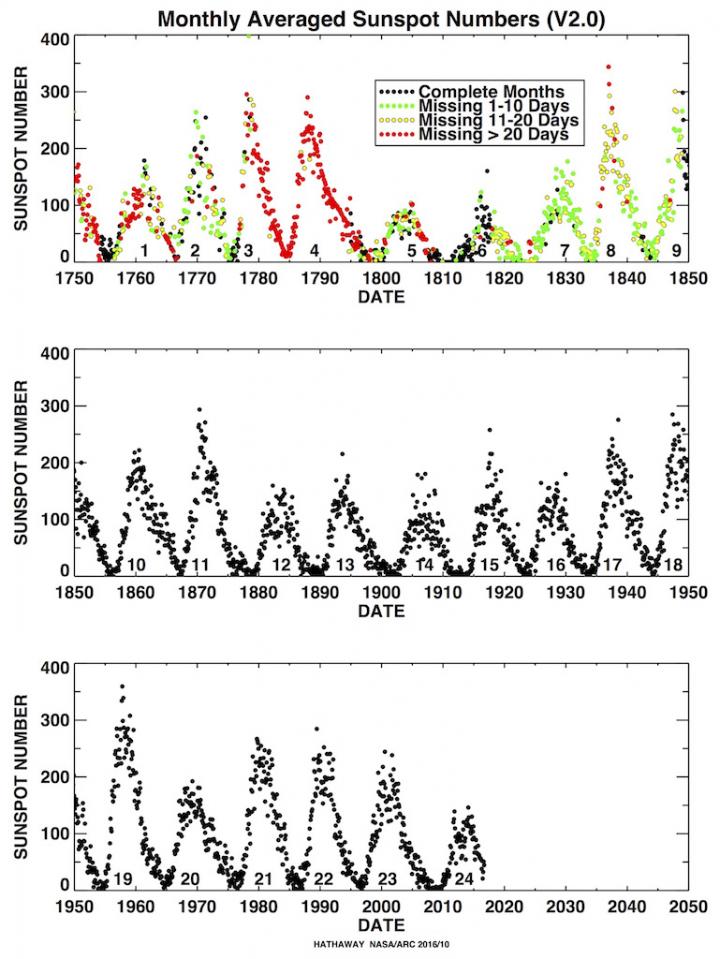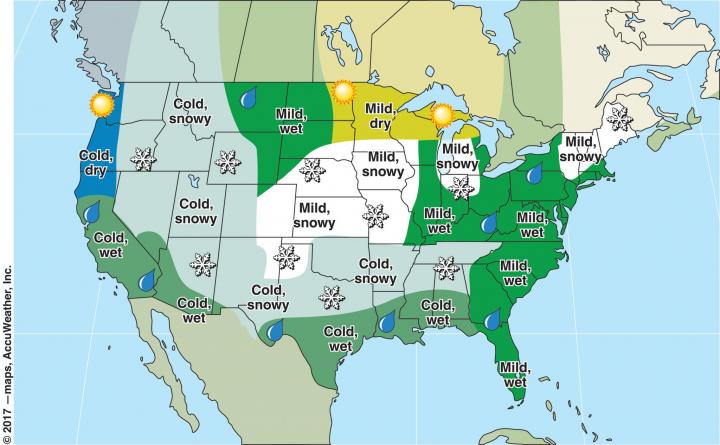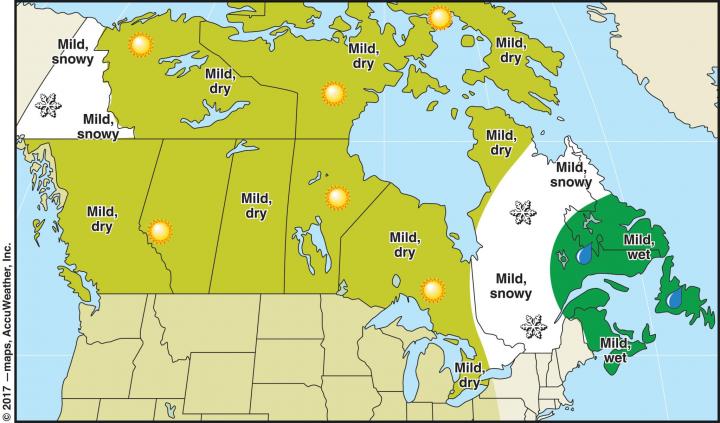Solar Activity and weather on earth
Those of you who have followed my recent blog posts about the seemingly nonstop solar storm activity we’ve been subjected to over the past week or so, will note that I’ve said that there is no scientific evidence to support any connection with them and our particularly brutal hurricane season.
It would seem that I wasn’t completely correct in that “no evidence” statement.
Below is a copy and paste of an article lifted in whole from the Old Farmer’s almanac. Over the years I’ve grown an increasingly elevated degree of respect for those folks. IF you have the chance I highly recommend going to their web site online. In my view they “do things right” there.
From The Old Farmer's Almanac:
WINTER OUTLOOK 2017–2018: COLDER THAN LAST YEAR
COLD WEATHER IS COMING . . . BUT HOW COLD AND FOR HOW LONG?
Overall, the long-range winter forecast for 2017–2018 shows generally colder temperatures than last winter for the U.S. and Canada but not colder than a typical winter, based on historical averages. As I write these words, there are no sunspots on the visible portion of the Sun, and solar activity is very quiet; this traditionally meant a cooling influence. So why isn’t it colder than average? Other weather factors are at play.
LOW SOLAR ACTIVITY
As you may know, we at The Old Farmer’s Almanac use solar activity as the driver of our long-range weather forecasts. We believe that changes in the Sun’s output, although relatively small, are sufficiently amplified in Earth’s upper atmosphere to strongly influence Earth’s weather patterns.
One of the most significant relationships we have found is that periods of low solar activity are associated with colder temperatures, averaged across Earth. Our viewpoint is a controversial one, as most scientists believe that the magnitude of changes in solar activity is insufficient to have a significant effect on Earth’s weather, and they view as coincidence that past periods of exceptionally low solar activity have historically corresponded with cold periods. However, there has been some research and modeling that gives credence to our theory: Although the changes in magnitude of solar activity are small, there is a mechanism in the upper atmosphere that can amplify these changes, causing larger ripples in the lower portion of Earth’s atmosphere, where weather occurs.
The graph below (from the NASA Marshall Spaceflight Center) shows the data for the officially numbered sunspot cycles, from Cycle 1 in the mid-1700s to our current Cycle 24. As you can see, the current cycle is comparable to the very low levels of solar activity that occurred in the early 1800s (the period referred to as the “Dalton Minimum,” which coincided with the “Little Ice Age”) and early 1900s, which was also a cool period. These three periods have brought the lowest solar activity levels since the Maunder Minimum, the period from about 1645 to 1715, when solar cycles apparently stopped and sunspots were exceedingly rare.

Historically, all of the periods in the known sunspot record that have had low activity have also had relatively cool temperatures, averaged across the globe. The Maunder Minimum coincided with an exceptionally cold period in many parts of the globe. We believe that with low solar activity continuing for at least the next 10 to 30 years, global temperatures will be cooler than they would otherwise be.
Despite the recent low solar activity, the winter of 2015–16 was historically warm across much of the United States and Canada. And while the 2016–17 winter was much colder than the previous winter in most locations, temperatures were still above normal in nearly all regions.
OTHER WEATHER FACTORS
So why, you might ask, was this past winter still relatively mild in most of the country even though solar activity is low? The answer is that solar activity is not the only factor in Earth’s weather.
For example, one factor that all atmospheric scientists believe can make Earth colder for as much as a few years is a volcanic eruption that spews ash into the middle and upper portions of the atmosphere. While this has not been a major factor in recent years, it could be in the future.
The most significant factor (in addition to solar activity) that has been affecting our weather in recent years has been the increase in greenhouse gases—most notably carbon dioxide and methane—which most (but not all) atmospheric scientists believe has been making Earth progressively warmer. We have been incorporating the influence of these increases into our forecasts as a factor that will offset much of the cooling from our current period of low solar activity.
In fact, despite the low solar activity, the first half of 2017 was 3.4 degrees F above average across the United States, the second warmest January to June period on record, behind only 2016. Amazingly, the last month in which the global average temperature was below its average for the 20th century was in February 1985, more than 30 years ago, according to the U.S. National Oceanic and Atmospheric Administration (NOAA), the parent agency of the U.S. National Weather Service.
It is important to note that although Earth, on average, has been warming for decades, not every place is or will be warmer than normal each season. Remember: Other factors are at play, including the normal variation in weather that occurs from day to day and year to year.
THE COMING WINTER FORECAST 2017–2018
Here’s our broad view of the coming winter: With last winter’s weak La Niña most likely to be replaced by a weak El Niño this winter, cold air masses will be able to slide into the Intermountain region and western states but will have difficulty making any prolonged inroads in the central and eastern states.


The result is that 2017–18 winter temperatures will be colder than last winter, they will likely still be above normal in the eastern and north-central states, with below-normal temperatures the rule from the Gulf States westward to California and from the Intermountain region westward to the Pacific Northwest.
See the full 2017-2018 weather forecast in the brand-new 2018 Old Farmer’s Almanac.
Comments
Post a Comment